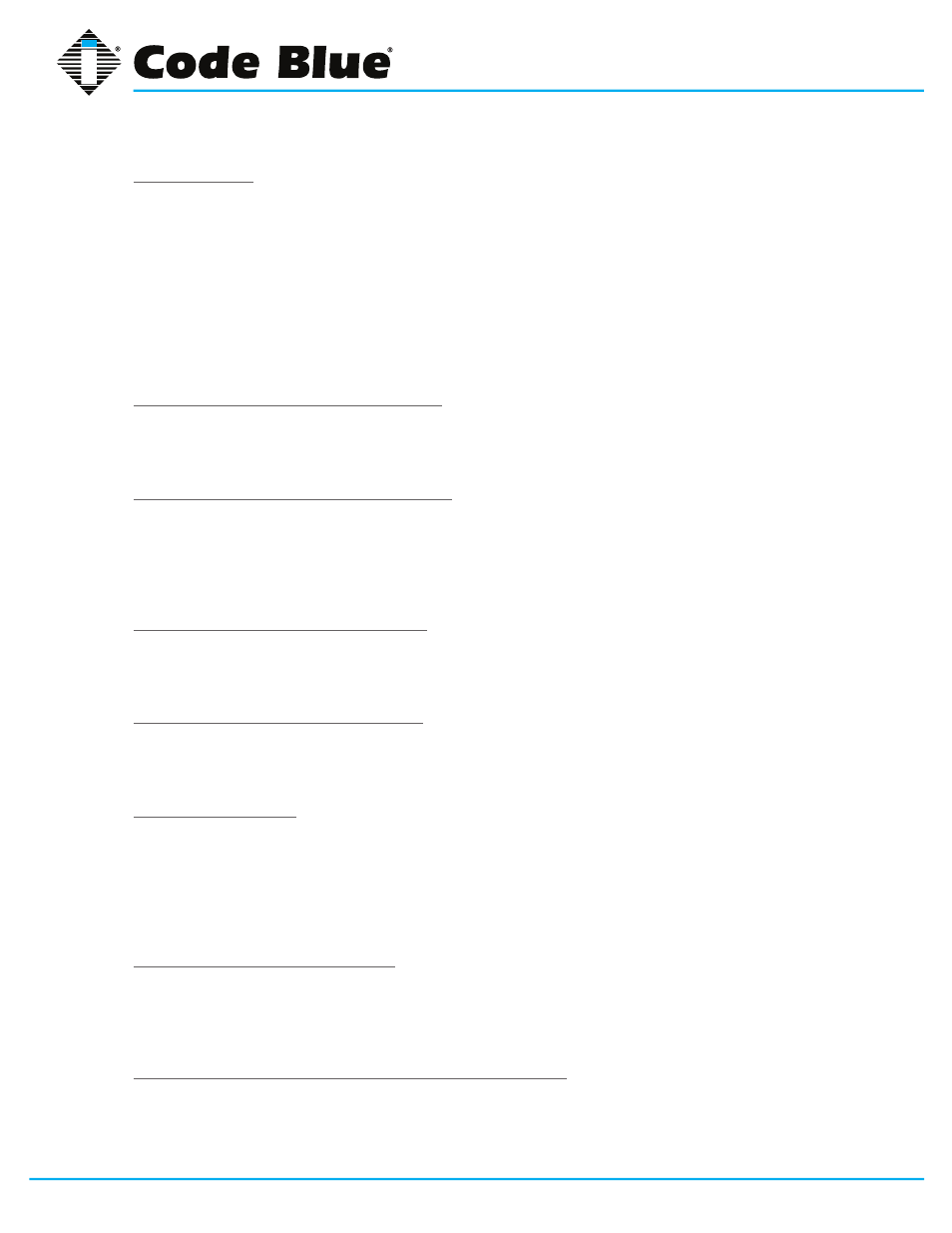Toolvox® x3, Administrator guide – Code Blue TOOLVOX X3 User Manual
Page 111

Code Blue
•
259 Hedcor Street
•
Holland, MI 49423 USA
•
800.205.7186
•
www.codeblue.com
GU-154-F
page 111 of 132
ToolVox® X3
Administrator Guide
Local networks
Postfix provides a flexible set of options to help prevent UCE or other unauthorized uses of the mail
server. This option defines what networks will be considered to be local by Postfix. The value is
used to determine whether a client is local or remote. Policies can be more relaxed for local clients.
This option configures the mynetworks directive and defaults to a list of all networks attached to the
server. For example, if the server has an IP of 192.168.1.48 and a netmask of 255.255.255.0, all
of the 192.168.1.0 network will be considered local. If you would like stricter control or the ability to
treat other network blocks as local clients, you can specify them here in the form of network/mask
pairs (i.e., 172.16.0.0/16). Network/mask pairs may be inserted from a separate file by specifying
the absolute path to the file here.
Send postmaster notice on bounce to...
This option configures the user name or email address where bounce notices will be sent. This
option correlates to the bounce_notice_recipient and is set to postmaster by default.
Send postmaster notice on 2bounce to...
This option configures the user name or email address where second bounce messages will be
sent. This allows an administrator to watch for second bounce warnings more closely than first
bounce messages, because first bounces are far more common and less likely to indicate serious
problems. The option configures the 2bounce_notice_recipient directive and defaults to postmaster.
Send postmaster notice on delay to...
This option configures where delay warnings will be sent. This option correlates to the delay_notice_
recipient directive and defaults to postmaster.
Send postmaster notice on error to...
Specifies where error warnings will be sent. This option correlates to the error_notice_recipient
directive and defaults to postmaster.
Mail queue directory
This specifies the directory where Postfix will store queued mail. This will also be the root directory
for Postfix daemons that run in a chroot environment. The queue is where messages awaiting
delivery are stored, providing enough space to accommodate your user mail load in this directory.
This option correlates to the queue_directory directive and usually defaults to a sensible location for
your OS. Many Linux systems will have the mail queue in /var/spool/mail or /var/spool/postfix.
Lock file dir, relative to queue dir
This option configures the location of the Postfix lock directory. It should be specified relative to
the queue directory and generally will simply be a subdirectory of the queue directory. This option
configures the process_id_directory directive and defaults to pid.
Separator between user names and address extensions
This option specifies the separator character between user names and address extensions. This
option correlates to the recipient_delimiter directive and defaults to using no delimiter. This option